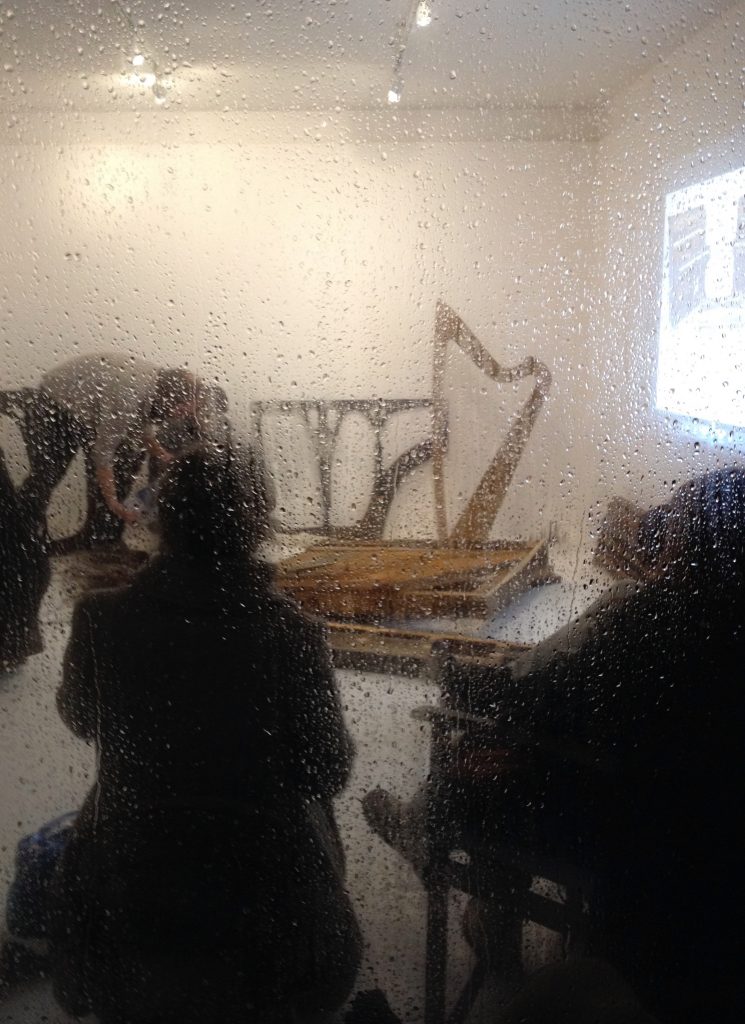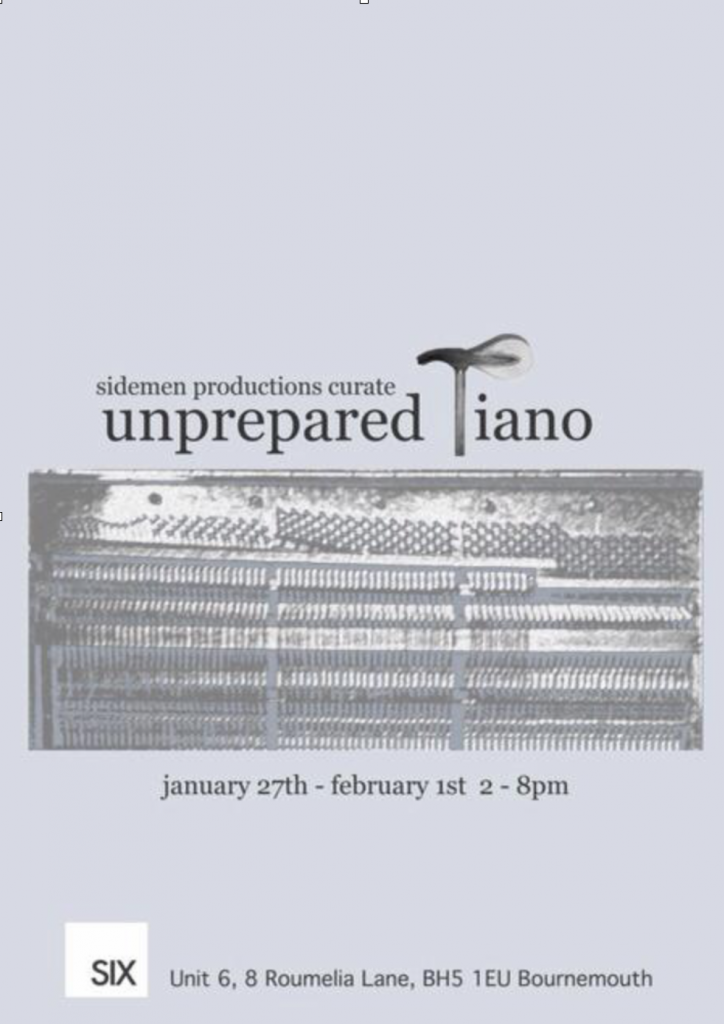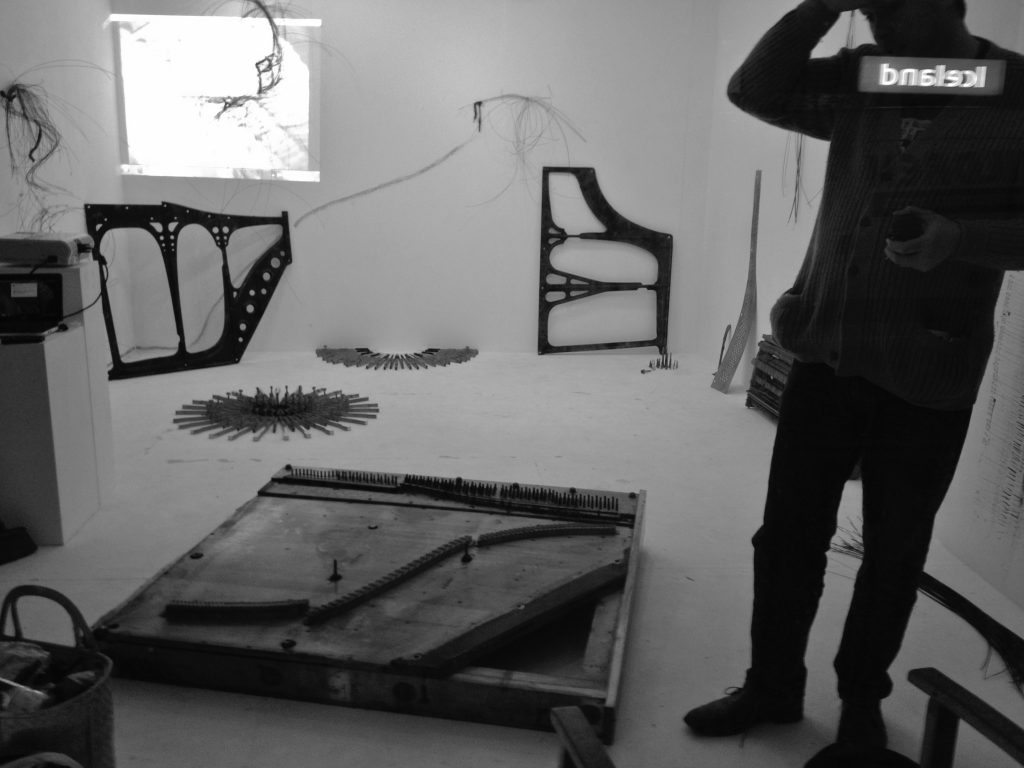
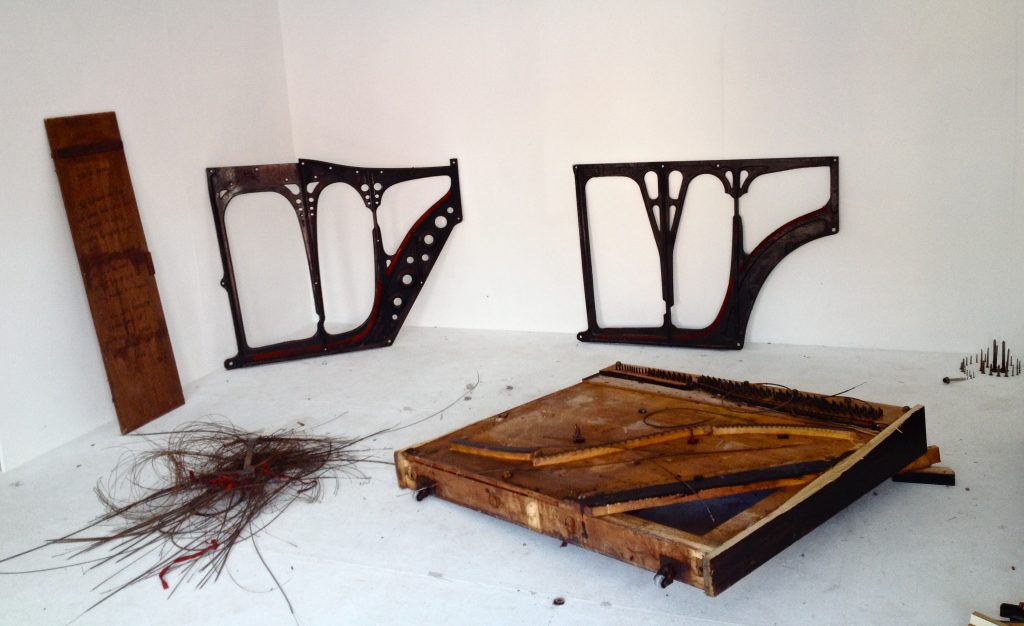
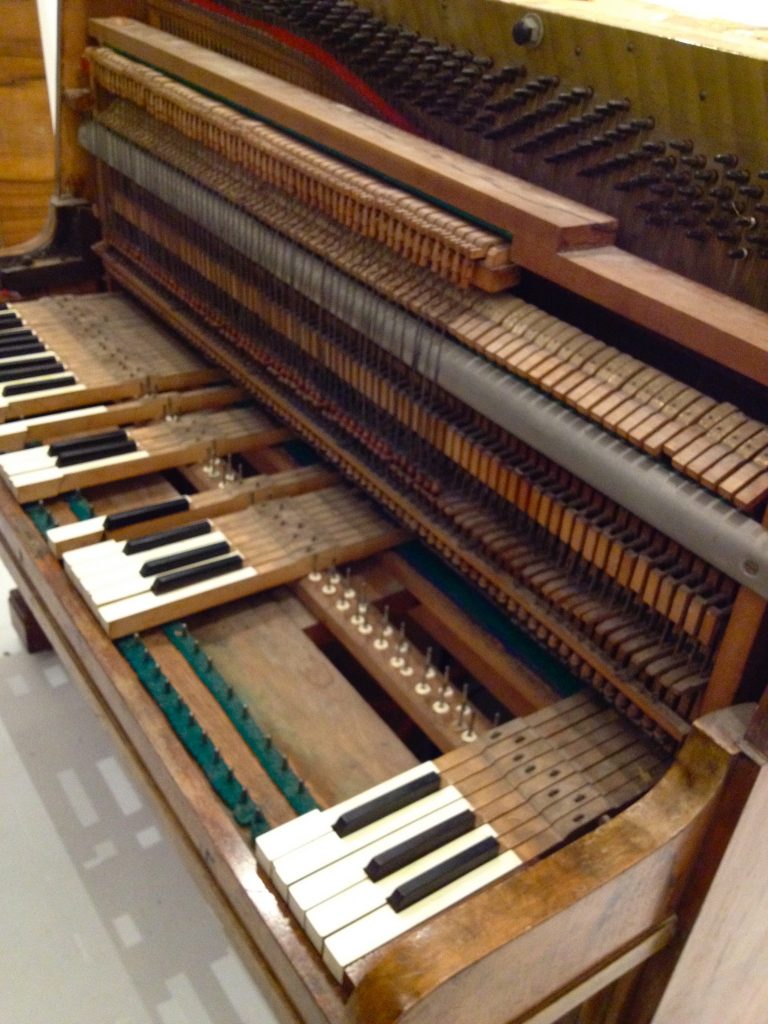
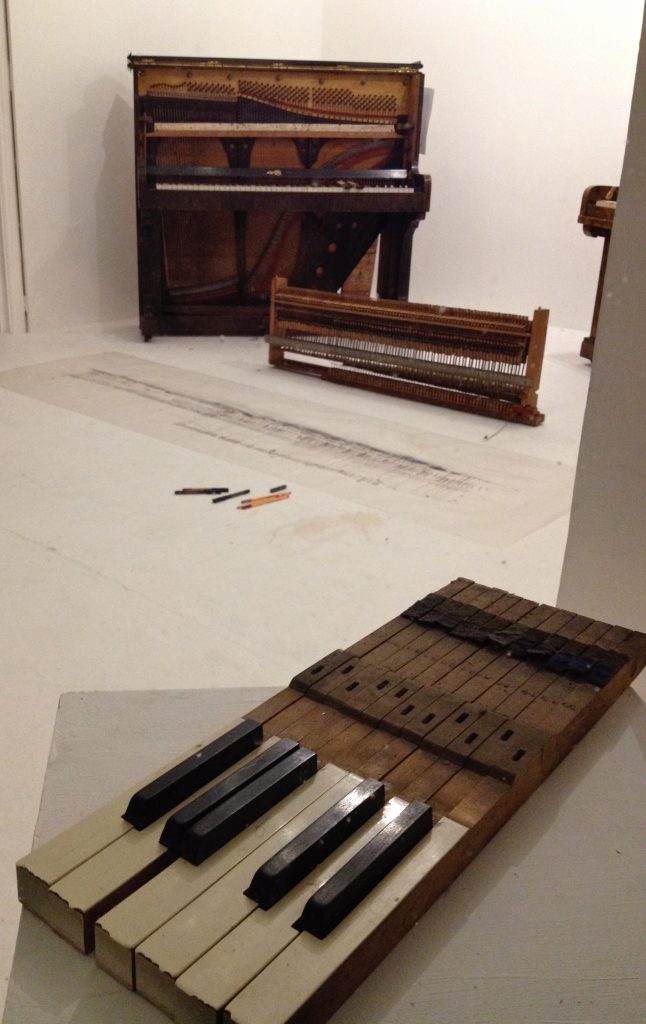
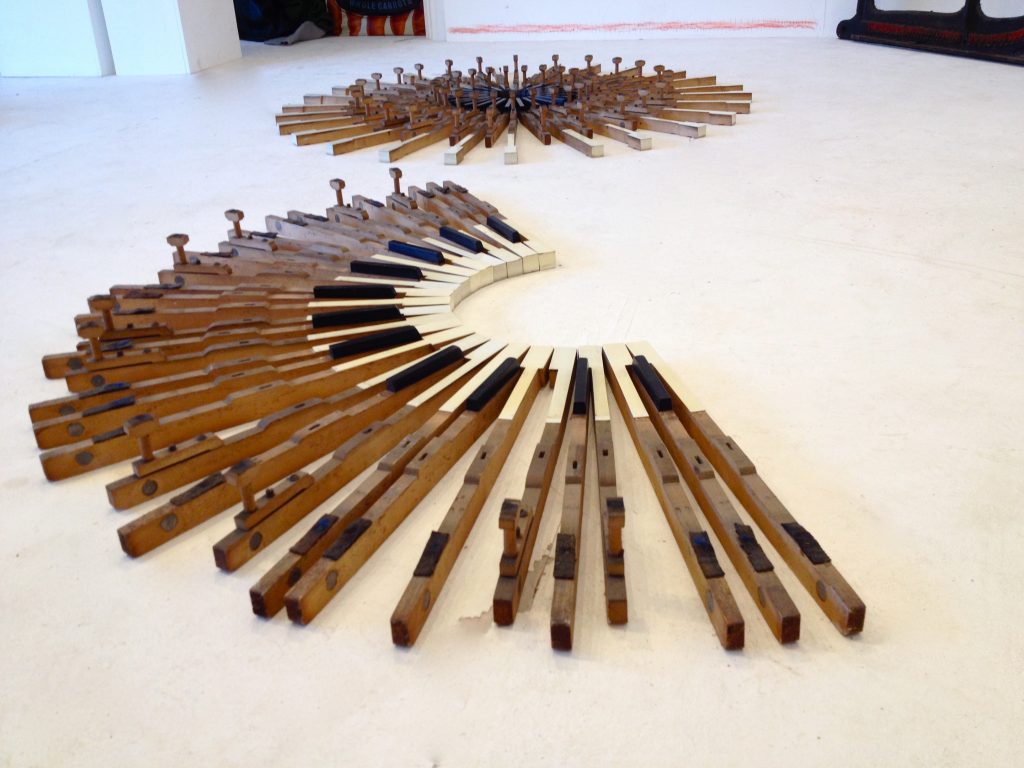
Artists: Andrew McCutchion, Paul Hawkins
Curation: Sarah Grace Harris
Title: Unprepared Piano
Dates: 27.01.14-01.02.14
The piano is often considered the top of the musical food chain … the matriarch of the musical world. In terms of power, size and versatility there really is no other instrument that measures up. In many respects it is considered the simplest instrument to learn (88 keys all there ready, no need for intonation. a repeating pattern of 12 pre prepared keys))but the most difficult to master.
More recently, I have realised that a pianist has a different kind of relationship to their instrument than other musicians. A pianist generally travels light and needs to get someone in to aid with the upkeep of their instrument. Notwithstanding that at home there may be a trusted, hard chosen and faithful model, every different venue will see a pianist forge a new relationship, fraught with getting to know the instrument and its sometimes subtle, sometimes heartbreakingly (oh the joy of playing Mozart’s K467 on an instrument with a sticking middle C) obvious, flaws and strengths. A violinist will travel with their instrument, change the strings, tune it, polish it, adjust the bridge, repair the sound peg and generally keep it safe and close. A pianist is at the mercy of potluck.
A piano is a work of engineering in a way that no other instrument is. A woodwind instrument, from the ocarina to the most modern saxophone is a variation on a theme that dates back as long as man could make sound with his breath and his environment. The string instruments we see today are simply gut and tension rebooted for the modern musician and whilst the piano can be linked directly back to the harpsichord, its development is truly staggering. The original keyboards consisted of eight plucked strings.
An average piano has 230 strings each tightened to pressure of 160 pounds …that means the combined tension of a piano is about 18 tonnes of pressure. As a pianist I realised I didn’t have the intimacy (to/with what?) of other instrumentalists and whilst I have my favourite pianos and venues, there was not the same bond with the instrument. Moreover, whilst I knew the theory of how it all worked I did not have that understanding that other instrumentalists had. I don’t bring my instrument along in a little case and assemble its three pieces every time I wanted to play like a flautist. I just know the piano will work.
So here it is; in essence, a chance to explore the insides of a piano. See every nook and cranny, every working part, how they all link together. I want to see how the heart beats and how, with the simplest of pressure from my finger I can create a phenomena of air waves being manipulated in to what we recognise as music.
Billy Joel once likened a bad piano experience to a dreary one night stand; all the bits are in the same pace, but with out the getting to know each other, nothing lasting can be forged, it is pot luck. Anticipation is no replacement for understanding. With this personification in mind this experiment is a post-mortem with a view to garnering knowledge of understanding. No longer taking the most noble of instrument for granted, and celebrating the amazing skill and team effort that goes into creating the piano.
Andrew McCutchion 24th Jan 2014
